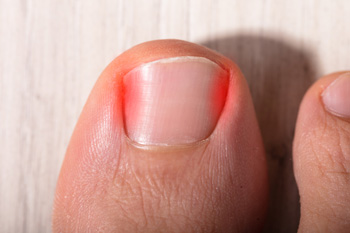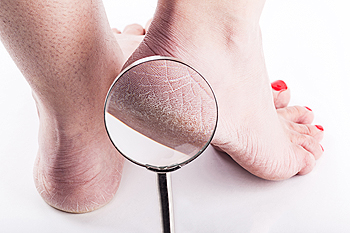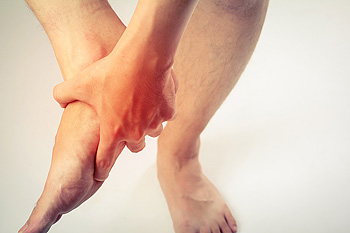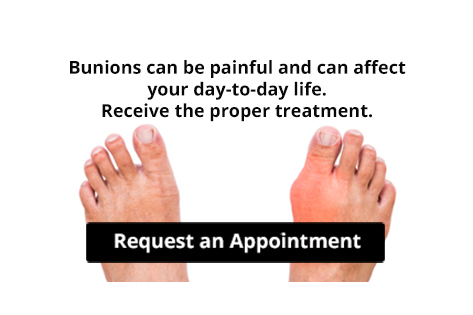June 2019
Possible Treatment of Ingrown Toenails
 When the side of the toenail grows into the surrounding skin, an ingrown toenail has developed. The symptoms that are commonly associated with this condition include redness, swelling, and tenderness. If it is not promptly treated, severe pain and discomfort may develop from a potential infection. Ingrown toenails may be common among patients with diabetes or poor circulation. Effective treatment options can include removing the part of the nail that is growing into the skin, in addition to treating the nail bed. This may help to prevent an infection from occurring again. If you have developed this uncomfortable ailment, it is advised to consult a podiatrist as quickly as possible to begin proper treatment.
When the side of the toenail grows into the surrounding skin, an ingrown toenail has developed. The symptoms that are commonly associated with this condition include redness, swelling, and tenderness. If it is not promptly treated, severe pain and discomfort may develop from a potential infection. Ingrown toenails may be common among patients with diabetes or poor circulation. Effective treatment options can include removing the part of the nail that is growing into the skin, in addition to treating the nail bed. This may help to prevent an infection from occurring again. If you have developed this uncomfortable ailment, it is advised to consult a podiatrist as quickly as possible to begin proper treatment.
Ingrown toenails can become painful if they are not treated properly. For more information about ingrown toenails, contact Dr. Lee R. Stein of Lake Shore Foot & Ankle, PC. Our doctor can provide the care you need to keep you pain-free and on your feet.
Ingrown Toenails
Ingrown toenails occur when a toenail grows sideways into the bed of the nail, causing pain, swelling, and possibly infection.
Causes
- Bacterial infections
- Improper nail cutting such as cutting it too short or not straight across
- Trauma to the toe, such as stubbing, which causes the nail to grow back irregularly
- Ill-fitting shoes that bunch the toes too close together
- Genetic predisposition
Prevention
Because ingrown toenails are not something found outside of shoe-wearing cultures, going barefoot as often as possible will decrease the likeliness of developing ingrown toenails. Wearing proper fitting shoes and using proper cutting techniques will also help decrease your risk of developing ingrown toenails.
Treatment
Ingrown toenails are a very treatable foot condition. In minor cases, soaking the affected area in salt or antibacterial soaps will not only help with the ingrown nail itself, but also help prevent any infections from occurring. In more severe cases, surgery is an option. In either case, speaking to your podiatrist about this condition will help you get a better understanding of specific treatment options that are right for you.
If you have any questions please feel free to contact one of our offices located in Chicago, Highland Park, and Uptown, IL . We offer the newest diagnostic and treatment technologies for all your foot and ankle needs.
Cracked Heels Can Cause Difficulty in Walking
 The uncomfortable condition that is known as cracked heels can develop for a variety of reasons. If the climate is cold and dry, the risk of having this ailment may increase. Additionally, the skin on the heels can become dry if medical conditions exist that include eczema and psoriasis. Another common cause of this condition is wearing shoes that have an open back. Mild relief may be found by washing the feet in warm water, followed by using a good moisturizer. If you have children, it is important to notice if they have cracked heels, and are having difficulty walking. If this pertains to you or your child, it is advised to consult with a podiatrist as quickly as possible so the correct treatment can begin.
The uncomfortable condition that is known as cracked heels can develop for a variety of reasons. If the climate is cold and dry, the risk of having this ailment may increase. Additionally, the skin on the heels can become dry if medical conditions exist that include eczema and psoriasis. Another common cause of this condition is wearing shoes that have an open back. Mild relief may be found by washing the feet in warm water, followed by using a good moisturizer. If you have children, it is important to notice if they have cracked heels, and are having difficulty walking. If this pertains to you or your child, it is advised to consult with a podiatrist as quickly as possible so the correct treatment can begin.
Cracked heels are unsightly and can cause further damage to your shoes and feet. If you have any concerns, contact Dr. Lee R. Stein from Lake Shore Foot & Ankle, PC. Our doctor can provide the care you need to keep you pain-free and on your feet.
Cracked Heels
Cracked heels appear unappealing and can make it harder for you walk around in sandals. Aside from looking unpleasant, cracked heels can also tear stockings, socks, and wear out your shoes. There are several methods to help restore a cracked heel and prevent further damage.
How Do You Get Them?
Dry skin is the number one culprit in creating cracked heels. Many athletes, walkers, joggers, and even swimmers suffer from cracked heels. Age and skin oil production play a role to getting cracked heels as well.
Promote Healing
Over the counter medicines can help, especially for those that need instant relief or who suffer from chronic dry feet.
Wear Socks – Wearing socks with medicated creams helps lock in moisture.
Moisturizers – Applying both day and night will help alleviate dryness which causes cracking.
Pumice Stones – These exfoliate and remove dead skin, which allows for smoother moisturizer application and better absorption into the skin.
Change in Diet
Eating healthy with a well-balanced diet will give the skin a fresh and radiant look. Your body responds to the kinds of food you ingest. Omega-3 fatty acids and zinc supplements can also revitalize skin tissue.
Most importantly, seek professional help if unsure how to proceed in treating cracked heels. A podiatrist will help you with any questions or information needed.
If you have any questions, please feel free to contact one of our offices located in Chicago, Highland Park, and Uptown, IL . We offer the newest diagnostic and treatment technologies for all your foot care needs.
Are Bunions Affecting Your Everyday Life?
The Consequences of Wearing the Wrong Size Shoe
Many people tend to wear the wrong size shoe because of convenience or style. However, there are consequences to wearing shoes that do not fit correctly. Primarily, wearing ill-fitting shoes may result in neuropathy. Neuropathy is a condition in which the feet will feel numb. This ailment is painful, and sometimes irreversible. Another side effect of wearing ill-fitting shoes is foot deformities. These may include hammer toes, corns and calluses. Finally, failing to wear the correct size shoe may cause falls and reduced mobility. It is worth it to get the feet professionally measured in order to reduce the risk of these ailments. If you have any questions about shoe size, or if you think you may be experiencing one or more of these side effects, it is advised to speak with a podiatrist.
It is important to find shoes that fit you properly in order to avoid a variety of different foot problems. For more information about treatment, contact Dr. Lee R. Stein from Lake Shore Foot & Ankle, PC. Our doctor will treat your foot and ankle needs.
Proper Shoe Fitting
Shoes have many different functions. They cushion our body weight, protect our feet, and allow us to safely play sports. You should always make sure that the shoes you wear fit you properly in order to avoid injuries and deformities such as: bunions, corns, calluses, hammertoes, plantar fasciitis, stress fractures, and more. It is important to note that although a certain pair of shoes might be a great fit for someone else, that doesn’t mean they will be a great fit for you. This is why you should always try on shoes before buying them to make sure they are worth the investment. Typically, shoes need to be replaced ever six months to one year of regular use.
Tips for Proper Shoe Fitting
- Select a shoe that is shaped like your foot
- Don’t buy shoes that fit too tight, expecting them to stretch to fit
- Make sure there is enough space (3/8” to ½”) for your longest toe at the end of each shoe when you are standing up
- Walk in the shoes to make sure they fit and feel right
- Don’t select shoes by the size marked inside the shoe, but by how the shoe fits your foot
The shoes you buy should always feel as good as they look. Shoes that fit properly will last longer, feel better, and improve your way of life each day.
If you have any questions, please feel free to contact one of our offices located in Chicago, Highland Park, and Uptown, IL . We offer the newest diagnostic and treatment technologies for all your foot care needs.
Types of Foot Pain
 The foot is comprised of several bones, ligaments, and tendons, and may undergo stress throughout the day. Conditions that include bunions, plantar fasciitis, and ingrown toenails are common ailments that many patients experience. These may occur as a result of wearing shoes that do not fit correctly. Additionally, diabetic patients may notice there are cuts on their feet that are not healing properly, and this may lead to foot ulcers. Another potential cause of foot pain is from the contagious foot condition known as athlete’s foot, or when a fungal infection enters the body through small cracks in the skin on the feet. Symptoms that often accompany this ailment include itchiness between the toes, or on the soles of the feet. If you are experiencing any type of foot pain, it is advised that you consult with a podiatrist who can properly treat a foot condition.
The foot is comprised of several bones, ligaments, and tendons, and may undergo stress throughout the day. Conditions that include bunions, plantar fasciitis, and ingrown toenails are common ailments that many patients experience. These may occur as a result of wearing shoes that do not fit correctly. Additionally, diabetic patients may notice there are cuts on their feet that are not healing properly, and this may lead to foot ulcers. Another potential cause of foot pain is from the contagious foot condition known as athlete’s foot, or when a fungal infection enters the body through small cracks in the skin on the feet. Symptoms that often accompany this ailment include itchiness between the toes, or on the soles of the feet. If you are experiencing any type of foot pain, it is advised that you consult with a podiatrist who can properly treat a foot condition.
Foot Pain
Foot pain can be extremely painful and debilitating. If you have a foot pain, consult with Dr. Lee R. Stein from Lake Shore Foot & Ankle, PC. Our doctor will assess your condition and provide you with quality foot and ankle treatment.
Causes
Foot pain is a very broad condition that could be caused by one or more ailments. The most common include:
- Bunions
- Hammertoes
- Plantar Fasciitis
- Bone Spurs
- Corns
- Tarsal Tunnel Syndrome
- Ingrown Toenails
- Arthritis (such as Gout, Rheumatoid, and Osteoarthritis)
- Flat Feet
- Injury (from stress fractures, broken toe, foot, ankle, Achilles tendon ruptures, and sprains)
- And more
Diagnosis
To figure out the cause of foot pain, podiatrists utilize several different methods. This can range from simple visual inspections and sensation tests to X-rays and MRI scans. Prior medical history, family medical history, and any recent physical traumatic events will all be taken into consideration for a proper diagnosis.
Treatment
Treatment depends upon the cause of the foot pain. Whether it is resting, staying off the foot, or having surgery; podiatrists have a number of treatment options available for foot pain.
If you have any questions, please feel free to contact one of our offices located in Chicago, Highland Park, and Uptown, IL . We offer the newest diagnostic and treatment technologies for all your foot care needs.
Blog Archives
- April 2025
- March 2025
- February 2025
- January 2025
- December 2024
- November 2024
- October 2024
- September 2024
- August 2024
- July 2024
- June 2024
- May 2024
- April 2024
- March 2024
- February 2024
- January 2024
- December 2023
- November 2023
- October 2023
- September 2023
- August 2023
- July 2023
- June 2023
- May 2023
- April 2023
- March 2023
- February 2023
- January 2023
- December 2022
- November 2022
- October 2022
- September 2022
- August 2022
- July 2022
- June 2022
- May 2022
- April 2022
- March 2022
- February 2022
- January 2022
- December 2021
- November 2021
- October 2021
- September 2021
- August 2021
- July 2021
- June 2021
- May 2021
- April 2021
- March 2021
- February 2021
- January 2021
- December 2020
- November 2020
- October 2020
- September 2020
- August 2020
- July 2020
- June 2020
- May 2020
- April 2020
- March 2020
- February 2020
- January 2020
- December 2019
- November 2019
- October 2019
- September 2019
- August 2019
- July 2019
- June 2019
- May 2019
- April 2019
- March 2019
- February 2019
- January 2019
- December 2018
- November 2018
- October 2018
- September 2018
- August 2018
- July 2018









